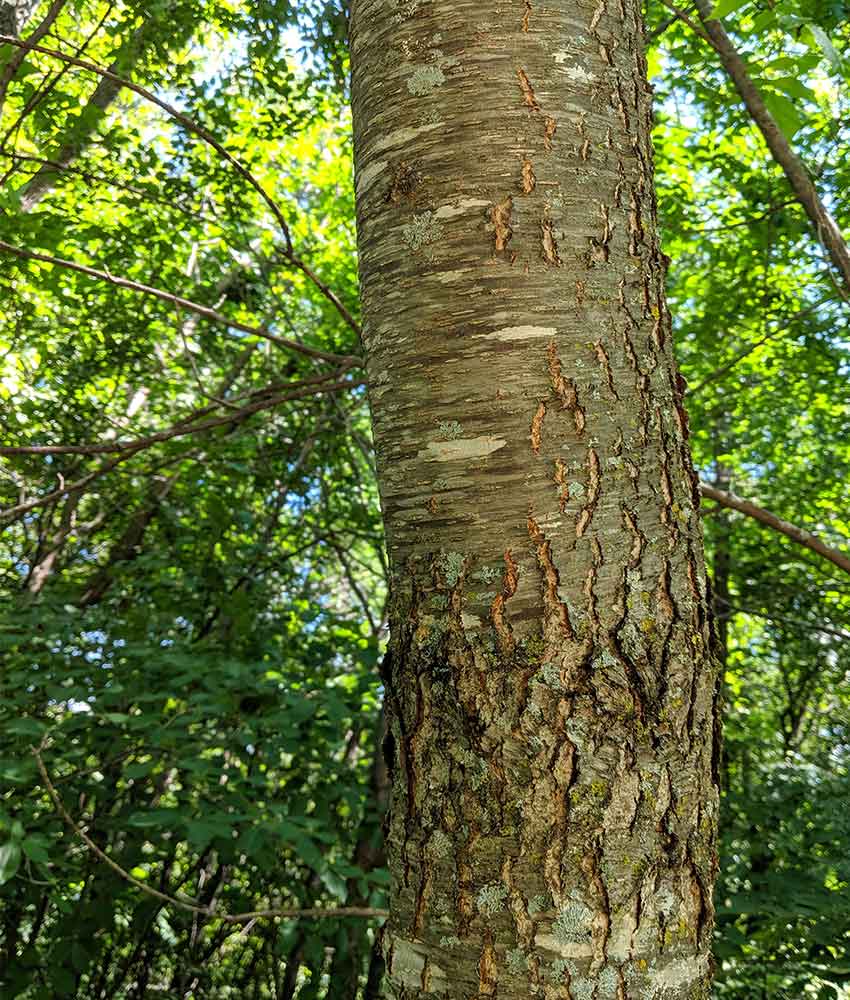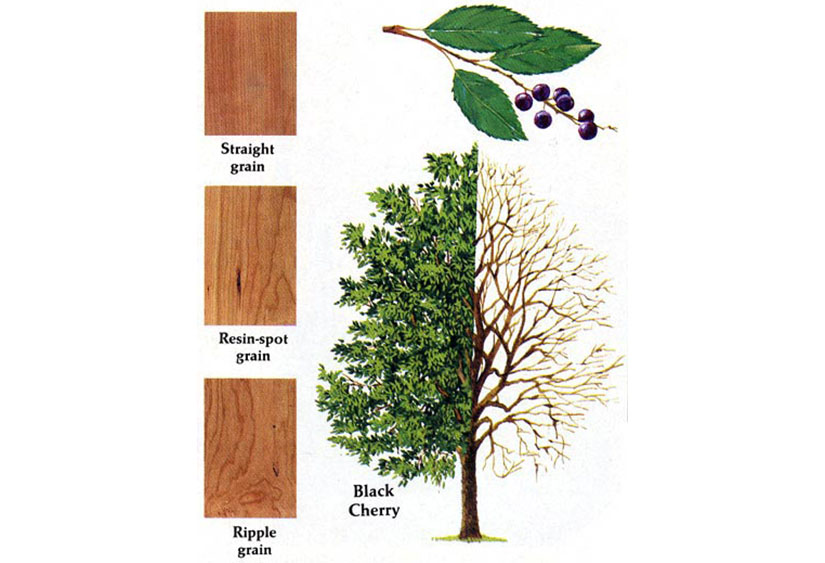If you’ve ever wondered where cherry wood comes from, you’re in the right place! Today, we’re going to dive into the origins of this beautiful wood. So, where is cherry wood native to? Let’s find out!
Cherry wood, with its rich reddish hues and smooth grain, has a fascinating story behind it. Believe it or not, cherry wood is native to several parts of the world, including North America, Europe, and Asia.
So, whether you’re curious about the cherry wood cabinets in your kitchen or the cherry wood furniture in your living room, get ready to discover the intriguing origins of this versatile and timeless material. Let’s explore the journey of cherry wood together!

Where is Cherry Wood Native to?
Cherry wood is a popular choice for furniture and woodworking due to its rich color, beautiful grain, and durability. But where does this sought-after wood originate from? In this article, we will explore the native regions of cherry wood and delve into its characteristics, benefits, and uses. So let’s dive in and discover the origins of cherry wood!
The Origins of Cherry Wood
Cherry wood is native to several regions around the world, with each variety showcasing its unique qualities. One of the most well-known and prized types of cherry wood comes from North America, primarily the eastern parts of the United States and Canada. The American Black Cherry, also known as Prunus serotina, is highly regarded for its rich reddish-brown color and smooth texture.
In Europe, the European Cherry (Prunus avium) is the predominant species of cherry tree. It can be found in various countries, including Germany, France, Poland, and the United Kingdom. European cherry wood is known for its warm reddish hues and intricate, tight grain patterns, making it a favorite among craftsmen and furniture makers.
In Asia, Japan holds a special place in the history of cherry wood. The Japanese Cherry, or Sakura, is renowned for its use in traditional woodworking and artistry. The light pink color of the wood, combined with its striking grain patterns, creates a distinct aesthetic that has captivated people for centuries.
Characteristics and Benefits of Cherry Wood
Cherry wood is prized for its distinctive characteristics, which contribute to its popularity in the woodworking industry. One of its standout features is its color, which deepens and develops a rich patina as it ages. This natural process gives cherry wood furniture a timeless quality that adds warmth and elegance to any space.
Another notable characteristic of cherry wood is its unique grain patterns. Cherry typically has a straight grain with occasional curly or wavy variations, adding visual interest to the wood’s surface. The smooth texture of cherry wood makes it a pleasure to work with, allowing craftsmen to achieve flawless finishes that highlight the natural beauty of the material.
Apart from its aesthetic appeal, cherry wood also possesses excellent durability. It is a moderately hard wood that ages well, maintaining its strength and structure over time. This durability makes cherry wood furniture a wise investment, as it can withstand everyday use and last for generations with proper care.
Uses of Cherry Wood
Cherry wood’s versatility lends itself to a wide range of applications. It is commonly used in the production of fine furniture, including chairs, tables, cabinets, and beds. The warm tones of cherry wood create a welcoming ambiance and can complement a variety of interior design styles, from traditional to modern.
In addition to furniture, cherry wood is also popular for decorative purposes. It is often used in paneling, moldings, and trim work to add a touch of sophistication and visual interest to homes and buildings. The rich color and smooth grain of cherry wood can enhance the architectural features of a space, creating a sense of luxury and craftsmanship.
Woodworkers and artisans appreciate cherry wood for its ease of carving and turnability. It is frequently employed in the creation of intricate woodwork, such as ornate carvings, musical instruments, and even sculptures. The consistency and stability of cherry wood make it an excellent choice for delicate detailing and precise craftsmanship.
To sum it up, cherry wood is native to North America, Europe, and Asia, with each region offering unique varieties and characteristics. From its origins as a tree to its transformation into exquisite furniture and art pieces, cherry wood continues to captivate us with its beauty, durability, and versatility. Whether you’re a woodworking enthusiast or an admirer of fine craftsmanship, incorporating cherry wood into your space will undoubtedly add warmth, elegance, and a touch of natural beauty. So go ahead and explore the wonders of cherry wood for yourself!
Key Takeaways: Where is Cherry Wood Native to?
- Cherry wood is native to Europe, Asia, and parts of North America.
- In Europe, cherry wood is commonly found in countries like France, Germany, and Poland.
- Asian countries where cherry wood grows are Japan, China, and Korea.
- North American cherry wood can be found in regions such as the eastern United States and Canada.
- Cherry wood is prized for its beautiful color, smooth texture, and durability.
Frequently Asked Questions
Cherry wood is a popular choice for furniture and woodworking projects due to its durability and beautiful grain patterns. If you’re curious about the origins of cherry wood, here are some questions and answers to enlighten you:
1. What is the natural habitat of cherry wood trees?
Cherry wood trees are native to the temperate regions of the Northern Hemisphere. They can be found in several countries, including the United States, Canada, Europe, and parts of Asia. These trees thrive in areas with moderate temperatures and well-drained soil, making them adaptable to different climates.
In North America, you can find cherry wood trees primarily in the eastern states, such as Pennsylvania, West Virginia, and Virginia. In Europe, they are commonly found in countries like Poland, Germany, and France. The specific species of cherry tree may vary depending on the region.
2. How does cherry wood end up in different parts of the world?
Cherry wood has been traded and transported across the globe for centuries. With advancements in transportation, cherry wood is now more accessible in various regions. It is often harvested from its native habitats and then processed and shipped to different parts of the world.
Global trade allows consumers to enjoy products made from cherry wood, regardless of their location. Furniture manufacturers, craftspeople, and woodworking enthusiasts can obtain cherry wood through suppliers or importers who source it from its native regions. This helps cater to the demand for cherry wood in different markets.
3. Are there different types of cherry wood based on their origin?
Yes, there are different types of cherry wood based on their origin. Each region produces cherry wood with unique characteristics, such as variations in color, grain pattern, and density. For example, American cherry wood, also known as Black Cherry or Prunus serotina, has a reddish-brown color and a fine, straight grain.
In contrast, European cherry wood, also called Sweet Cherry or Prunus avium, tends to have a lighter reddish hue and a more prominent grain. Each type of cherry wood offers distinct visual appeal and may have slight differences in workability and hardness.
4. Can cherry wood trees be cultivated outside their native range?
Cherry wood trees can be cultivated outside their native range, provided that the environmental conditions are suitable for their growth. People have successfully grown cherry trees in different parts of the world, including regions where they are not native.
However, it’s important to note that the growth and development of cherry wood trees can be influenced by factors like temperature, soil type, and sunlight. It may require careful selection of cherry tree varieties that are more adaptable to non-native environments, along with proper care and maintenance.
5. What are the benefits of using cherry wood in woodworking projects?
Using cherry wood in woodworking projects offers several benefits. Cherry wood is known for its natural beauty, rich reddish hue, and attractive grain patterns, which add elegance to furniture and other wooden items. It is also highly durable, making it suitable for long-lasting pieces.
Furthermore, cherry wood is relatively easy to work with, thanks to its moderate density and good workability. It can be carved, shaped, and sanded smoothly, enabling craftsmen to achieve intricate designs. Additionally, cherry wood has good dimensional stability, meaning it is less prone to warping or shrinking, making it a reliable choice for furniture construction.

Summary
Cherry wood is native to various places across the world, including North America, Europe, and Asia. These trees grow in different environments and have distinct characteristics. In North America, you can find cherry wood in regions such as the eastern United States and parts of Canada. In Europe, it is found in countries like France, Italy, and Germany. Asia is home to cherry wood trees in countries such as China and Japan. Each region’s cherry wood has unique qualities, making it a popular choice for furniture and decorative items.
